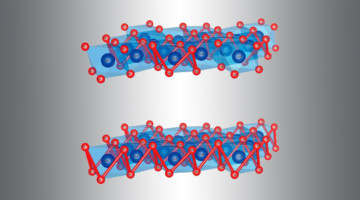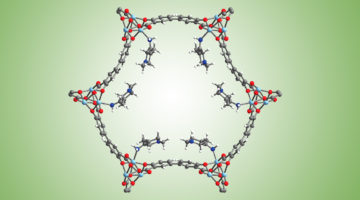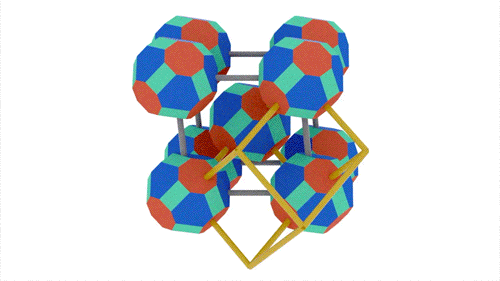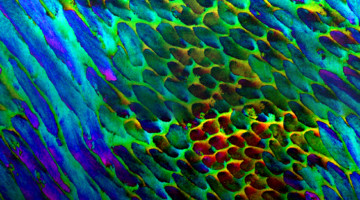Researchers successfully bioengineered changes to a molecular “assembly line” for bioactive compounds, based in part on insights gained from small-angle x-ray scattering at the ALS. The ability to re-engineer these assembly lines could improve their performance and facilitate the synthesis of new medically useful compounds. Read more »![]()
![]()
How a New Electrocatalyst Enables Ultrafast Reactions
With key data from the ALS, researchers discovered how a new, low-cost electrocatalyst enables an important oxygen reaction to proceed at an ultrafast rate. The work provides rational guidance for the development of better electrocatalysts for applications such as hydrogen-fuel production and long-range batteries for electric vehicles. Read more »![]()
![]()
Elusive Kagome Electronic Structures Revealed
Electronic-structure studies showed that both infinitely light and infinitely massive particles coexist in a material with a star-shaped (kagome) crystal lattice. The material’s rich array of electronic behaviors shows promise for future spintronic applications and represents a new frontier for studying exotic phases of matter. Read more »![]()
![]()
Water Improves Material’s Ability to Capture CO2
With the help of the ALS, researchers from UC Berkeley and ExxonMobil fine-tuned a material to capture CO2 in the presence of water. The parties have applied for a patent on the material, which was developed for use on the relatively humid flue gases emitted by certain natural gas power plants, a cleaner-burning alternative to coal. Read more »![]()
![]()
ALS Reveals Vulnerability in Cancer-Causing Protein
A promising anticancer drug, AMG 510, was developed by Amgen Inc. with the help of novel structural insights gained from protein structures solved at the ALS. AMG 510, which is currently in phase II clinical trials for efficacy, targets tumors caused by mutations in the KRAS protein, one of the most common causes of cancer. Read more »![]()
![]()
Molecular Handle Enables Viral Attack on Joint Cells
A collaboration of university and industry researchers used x-ray crystallography to investigate how the chikungunya virus, which can cause debilitating joint pain, engages a receptor protein found on the surfaces of joint cells. The work provides a path forward in the fight against a family of viruses that can result in acute and chronic arthritis. Read more »![]()
![]()
The Choreography of Quantum Dot Fusion
X-ray scattering experiments helped reveal how nanosized crystals (“quantum dots”) self-assemble and fuse to form “supercrystals” with potentially useful electronic properties. The findings provide new insight into the fabrication of high-performance, low-cost electronic materials for photovoltaic and photon-sensing applications. Read more »![]()
![]()
Crystal Misorientation Toughens Human Tooth Enamel
Researchers discovered that, in the nanoscale structure of human enamel (the hard outer layer of teeth), slight crystal misorientations serve as a natural toughening mechanism. The results help explain how human enamel can last a lifetime and provides insight into strategies for designing similarly tough bio-inspired synthetic materials. Read more »![]()
![]()
Machine Learning Helps Stabilize Synchrotron Light
Researchers showed that machine learning can predict noisy fluctuations in the size of beams generated by synchrotron light sources and correct them before they occur. The work solves a decades-old problem and will allow researchers to fully exploit the smaller beams made possible by recent advances in light source technology. Read more »![]()
![]()
Multimodal Study of Ion-Conducting Membranes
Using multiple x-ray characterization tools, researchers showed how chemical and structural changes improve the performance of a novel ion-conducting polymer (ionomer) membrane from 3M Company. The work provides insight into factors impacting the proton conductivity of ionomers used for fuel cells and the production of hydrogen fuel. Read more »![]()
![]()
- « Previous Page
- 1
- …
- 8
- 9
- 10
- 11
- 12
- 13
- Next Page »









